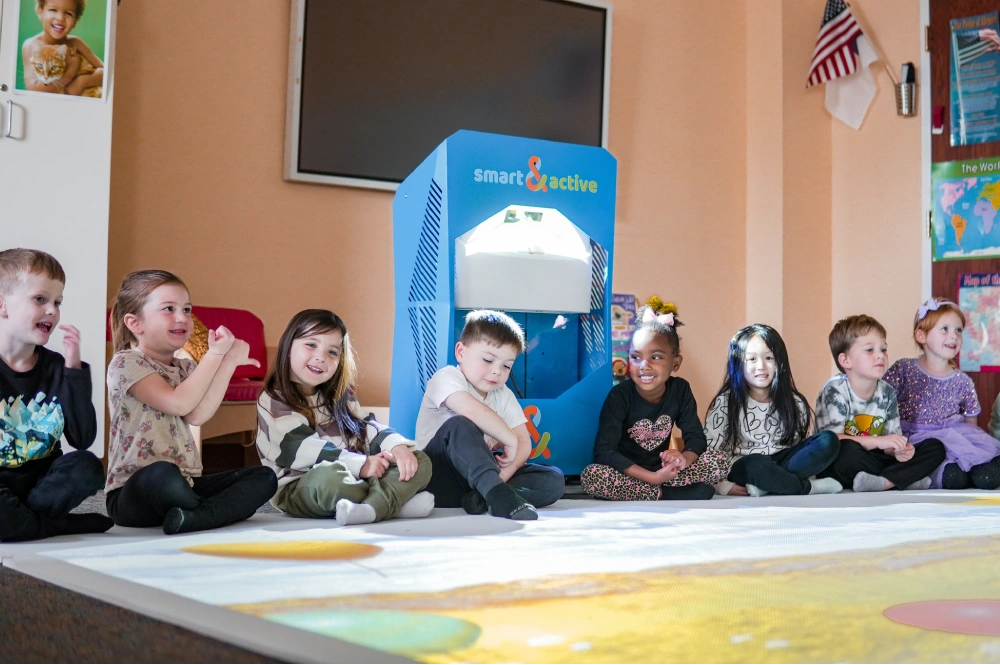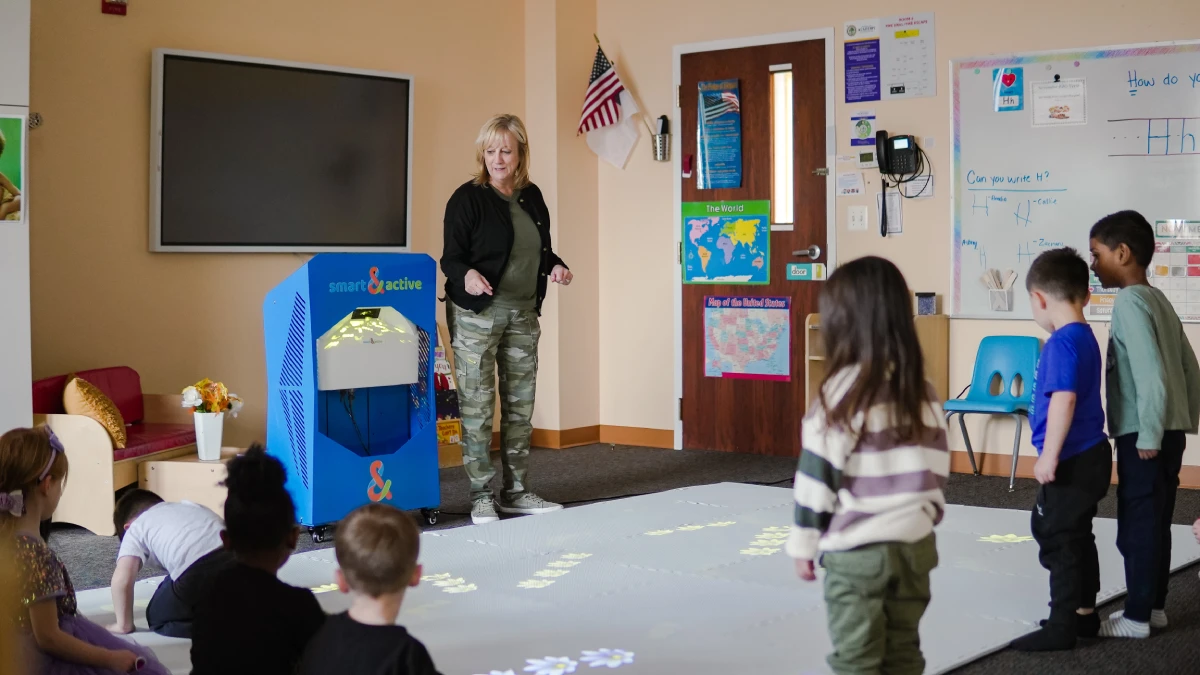According to recent data, the share of internet users worldwide has increased from 16% in 2005 to 66% in 2022 (1). This digital transformation is reflected in educational processes. What benefits do teachers and students gain?
What are educational technologies (EdTech) in K–12 schools?
Educational technologies (EdTech) in K–12 schools are digital tools and platforms that assist teachers and students in the learning process. They cover a wide range of solutions: from interactive whiteboards and online courses to artificial intelligence and adaptive learning.
Directions of EdTech in K–12:
Benefits of using technology in schools
Implementing new equipment in schools yields positive results, including:
Students become accustomed to modern technology
When students work with tablets or interactive whiteboards, they learn to search for information online, use educational platforms, analyze data, and utilize digital tools.
Technology also develops digital literacy—the ability to critically evaluate information and protect personal data. Such experience prepares children for university and future careers.
Learning takes a new form
Technology helps students better understand complex topics and retain information faster.
It also allows for learning at a comfortable pace. Adaptive platforms tailor content to each student’s knowledge level, while online courses enable unlimited material repetition. This approach makes learning more effective and engaging.
Group activities
Technology makes group work more convenient and efficient. Students can collaborate on projects even from different locations using online whiteboards, chats, and video calls.
Collaborative document editing, interactive platforms, and games help develop communication and teamwork skills.
These tools make learning more exciting: children learn to discuss ideas, solve problems, and propose solutions, just like in real-world work scenarios.
Opportunities for personalized learning
Technology enables each student to learn at their own pace. Adaptive platforms analyze progress and adjust tasks to the student’s level. If a topic is difficult, the system provides additional explanations and examples; if a student excels quickly, it offers more challenging tasks.
This approach:
Students move more, sit less
Instead of sitting at desks, children can participate in interactive lessons with augmented reality, use educational games incorporating movement, or work with tablets around the classroom.
Such activities improve coordination, enhance concentration, and reduce fatigue from prolonged sitting. Active learning makes the process more engaging and improves material retention.
Accessibility in education
Technology makes learning accessible for children with special needs. Special programs read text aloud, enlarge fonts, and adapt tasks for students with hearing, visual, or motor impairments.
Personalized settings and adaptive platforms allow students to learn at their own pace, making education more inclusive.
Access to more educational resources
Thanks to technology, students can utilize online libraries, scientific articles, video lessons, and interactive learning materials not found in traditional textbooks. This is especially useful for studying complex topics and broadening horizons.
Teacher support and automation of routine tasks
Technology helps teachers automate homework and test grading, analyze student progress, and adapt curricula to the class. This reduces educators’ workload and allows more time for explaining challenging subjects.
Disadvantages of using technology in schools
Despite the growing popularity of educational technology, there are some drawbacks:
Need for support and updates
Technology in schools requires constant updates and technical support. Programs become outdated, and without timely updates and repairs, students and teachers face learning disruptions. Without reliable support, technology becomes more of a hindrance than a help.
Need for integration
Implementing technology in schools requires seamless integration into the curriculum. Programs must align with educational standards. Without thoughtful adaptation, technology can overwhelm teachers and distract students. If systems aren’t compatible, they create additional learning challenges.
Teacher training
Teachers need time and resources to master new technologies. Without proper training, educators won’t use digital tools effectively, reducing their benefits. Some teachers struggle to adapt, and without support, they revert to old methods, negating the advantages of technology.
Important!
Our team helps schools implement equipment quickly. In the U.S., we provide support even after the warranty expires to ensure smooth operation. We also offer free updates to keep programs current.
Why EdTech is important for teachers
Integrating educational technology (EdTech) offers many benefits for teachers:
Diversifying teaching methods
EdTech is a tool for creating dynamic and innovative lessons. These lessons combine interactive games, presentations, and digital learning materials. This variety allows customization to different learning styles, making lessons more engaging and effective.
Increasing engagement and accessibility
Technology makes learning more accessible and interesting. Interactive platforms and multimedia resources help students better grasp material and stay focused. This makes classroom management easier and improves overall learning efficiency.
Supporting professional development
EdTech gives teachers access to online courses, webinars, and communities for sharing experiences. This fosters continuous professional growth, the adoption of new methods, and improved teaching quality.
Implementing educational technology simplifies teachers’ daily work and opens new opportunities for professional development.
Technologies used today
Modern technologies make learning more effective. Schools actively use Whiteboard in the classroom – traditional interactive boards that help visualize the material. Also Smartboards are common in classrooms – smart boards with touch control that allow working with multimedia content.
We offer even more opportunities for immersive learning. Our equipment includes:
Important!
Our equipment is fully compatible with school smartboards, so there’s no need to replace existing technology. You simply supplement the current system with new interactive solutions, expanding the school’s digital capabilities.
This is a convenient way to make learning more exciting and modern while using what’s already in the classroom.
New technologies and education
We create an educational environment that engages multiple senses simultaneously—sight, hearing, and touch. This multi-channel approach makes learning more effective, as information is perceived through different sensory pathways, forming strong neural connections.
How does it work?
Our technologies turn learning into an interactive process where students don’t just listen but actively engage:
Integration options for our technologies
Our equipment serves various purposes:
Equipment for a single classroom
Interactive technology in one classroom modernizes learning without major infrastructure changes.
Usage examples:
Equipment for PE
At KidsJumpTech, we make physical education more dynamic.
For example:
Sensory room
A dedicated space with interactive tools for children with special needs to develop sensory, cognitive, and motor skills. View all Sensory Room kits:
Usage examples:
Our development principles for games and equipment
We focus on children’s needs and educational goals. Our games and tools develop key skills through engaging, interactive scenarios.
Key principles:
Schools using our technologies
Charles D. Harrington School
We love how the company works with us to adapt programs for our students. Highly recommended for other schools.
Twin Rivers Unified School District
The biggest benefit is it gets kids moving. Math, reading, and spelling games enhance understanding—it’s a complete learning experience.
Southern Wells Elementary School
An elementary school ordered an interactive sandbox as well as an interactive table. Our staff helped install the equipment and trained the teachers. Over several years of use, the technology has shown great results – children are more engaged during lessons, collaborate with each other, and focus better on the activities.
Test our equipment
Before making a decision, you can see the capabilities of our technologies for yourself. We offer several convenient ways to test the equipment:


